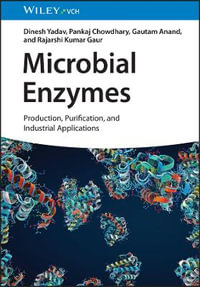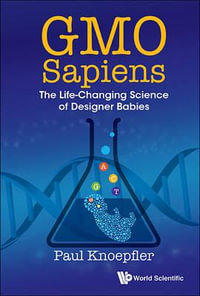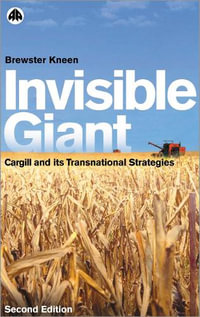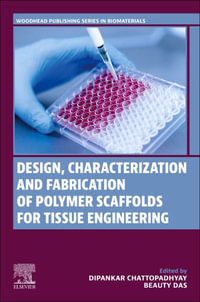PART I: INTRODUCTION, SAMPLING AND PROCEDURES 1. Introduction Corinne Whitby and Torben Lund Skovhus 2: Sampling and nucleic extraction procedures from oil reservoir samples Geert M. van der Kraan, Maarten de Ridder, Bart Lomans and Gerard Muyzer PART II: APPLICATION OF MOLECULAR MICROBIAL METHODS TO THE OIL INDUSTRY 3. Application of molecular microbial methods to the oil industry to analyze DNA, RNA and proteins Sean Caffrey 4. Which microbial communities are present? Importance of selecting appropriate primers and probes for use in molecular microbiology methods (MMM) in oil fields Ketil Sorensen 5. Which microbial communities are present? Application of PCR-DGGE: case study on an oil field core sample Geert M. van der Kraan, Floris Buijzen, Cor Kuijvenhoven and Gerard Muyzer 6. Which microbial communities are present? Application of clone libraries: syntrophic acetate degradation to methane in a high-temperature petroleum reservoir Natalya Shestakova, Valeriy Ivoilov, Tatiana Tourova, Sergey Belyaev, Andrei Poltaraus, and Tamara Nazina 7. Which microbial communities are present? Using Fluorescent in situ hybridisation (FISH): Microscopic Techniques for Enumeration of Troublesome Microorganisms in Oil and Fuel Samples Lars Holmkvist, Jette Johanne Ostergaardand Torben Lund Skovhus 8. Which microbial communities are present? Sequence based Metagenomics Sean Caffrey 9. How many microorganisms are present? Quantitative Reverse Transcription PCR (qRT- PCR) Andy Price, Laura Acuna Alvarez, Corinne Whitby and Jan Larsen 10. How many microorganisms are present? Techniques for enumerating microorganisms in oil fields Ketil Sorensen, Torben Lund Skovhus and Jan Larsen 11. Which members of the microbial communities are active? Microarrays Brandon Morris PART III: PROBLEMS CAUSED BY MICROBES TO THE OIL INDUSTRY AND TREATMENT STRATEGIES 12. Problems caused by microbes and treatment strategies. Monitoring and preventing reservoir souring using molecular microbial methods Antje Gittel 13. Problems caused by microbes and treatment strategies. The effect of nitrate injection in oil reservoirs: Experience with Nitrate Injection in the Halfdan Oil Field Jan Larsen and Torben Lund Skovhus 14. Problems caused by microbes and treatment strategies. Monitoring microbial responses to biocides: Bioassays- a concept to test the effect of biocides on both Archaea and Bacteria in oil field systems Lars Holmkvist, Uffe Sognstrup Thomsen, Jan Larsen, Michael Jensen and Torben Lund Skovhus 15. Problems caused by microbes and treatment strategies. Identification of H2S-producing bacteria in corrosion product of a gas pipeline Marcia Lutterbach and Luciana Contador 16. Problems caused by microbes and treatment strategies. Rapid diagnostics of Microbiologically Influenced Corrosion (MIC) in oil field systems with a DNA-based test kit Torben Lund Skovhus, Ketil Sorensen and Jan Larsen 17. Problems caused by microbes and treatment strategies. Anaerobic Hydrocarbon Biodegradation and Biocorrosion. Joseph Suflita and Kathleen Duncan 18. Problems caused by microbes and treatment strategies. Health and safety issues from the production of hydrogen sulphide Nicole Williamson 19. Problems caused by microbes and treatment strategies. Downstream Petroleum Microbiology: An Industry Perspective Elaine McFarlane PART IV: HOW SPECIFIC MICRIOBIAL COMMUNITIES BENEFIT THE OIL INDUSTRY 20. How specific microbial communities benefit the oil industry. Biorefining and Bioprocessing for Upgrading Petroleum Oil Ajay Singh 21. How specific microbial communities benefit the oil industry. Microbial Enhanced Oil Recovery (MEOR) Svetlana Rudyk and Erik Sogaard 22. How specific microbial communities benefit the oil industry. Anaerobic microbial processes and the prospect for methane production from oil Lisa Gieg 23. How specific microbial communities benefit the oil industry. Case Study: Proof of concept that oil entrained in marginal reservoirs can be bioconverted to methane gas as a green energy recovery strategy Lisa Gieg 24. How specific microbial communities benefit the oil industry. Dynamics of Alcanivorax spp. in oil contaminated intertidal beach sediments undergoing bioremediation Arvind Singh, Angela Sherry, Neil Gray, Martin Jones, Wilfred Roling and Ian Head 25. How specific microbial communities benefit the oil industry. Significant contribution of methyl/methanol-utilizing methanogenic pathway in a subsurface biogas environment Dariusz Strapoc, Matt Ashby,Ladonna Wood, Rick Levinson andBradley Huizinga PART V FUEL FOR THE FUTURE 26. Fuel for the future. Development of new fuels, e.g. biofuels Gitte Sorensen, Ketil Sorensen, Hans Ove Hansen and Sune Nygaard 27. Fuel for the future. Biodiesel: A Case study Marcia Lutterbach and Mariana Galvao 28. Fuel for the future. Unlocking New Fuel Resources Richard Johnson and Corinne Whitby APPENDIX I Description of Methods used by some of the contributing authors in this book























